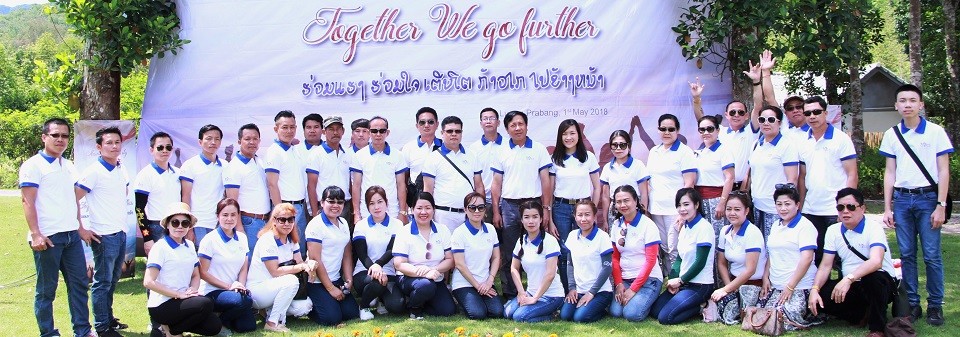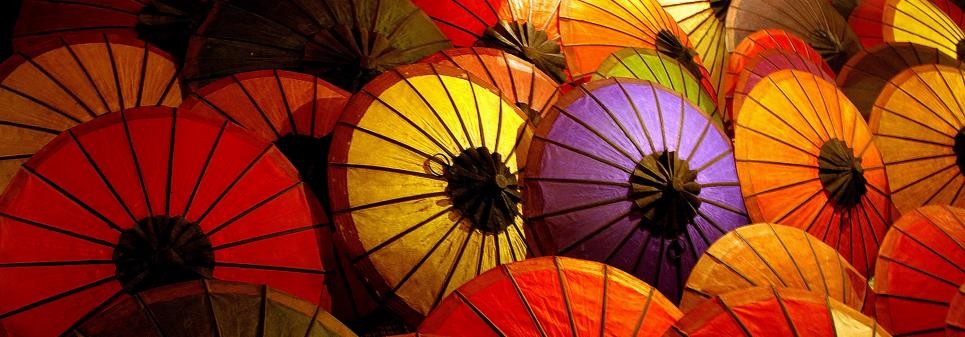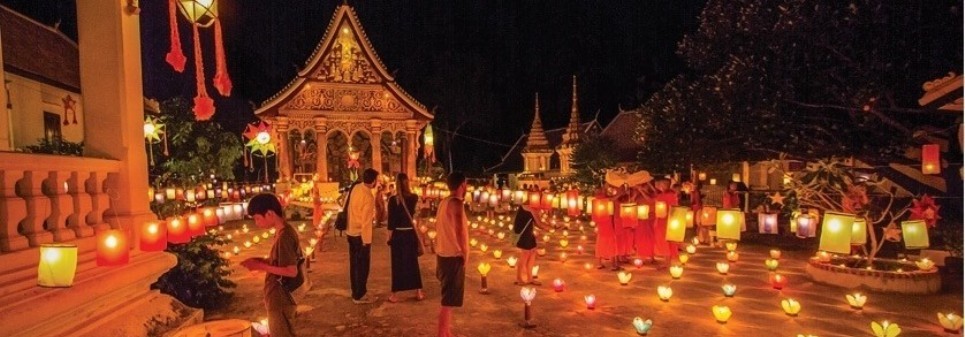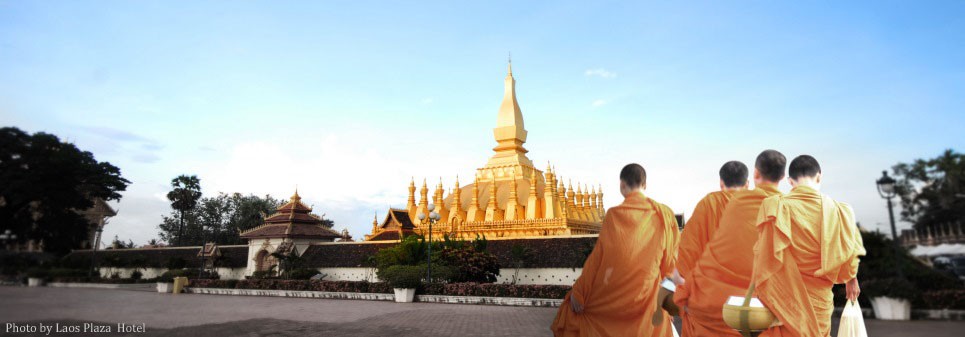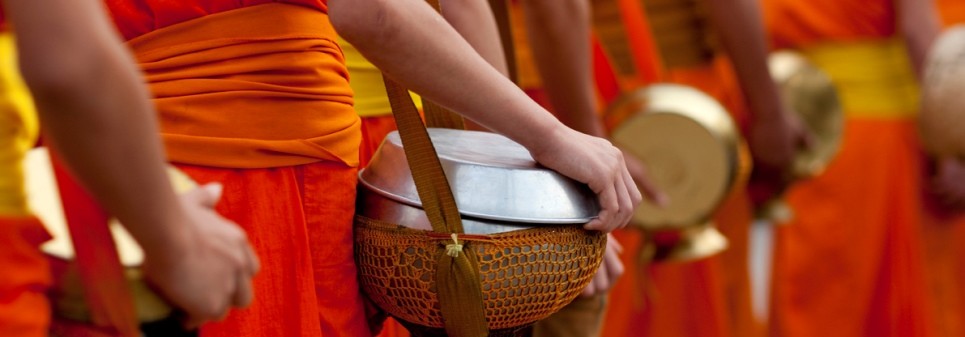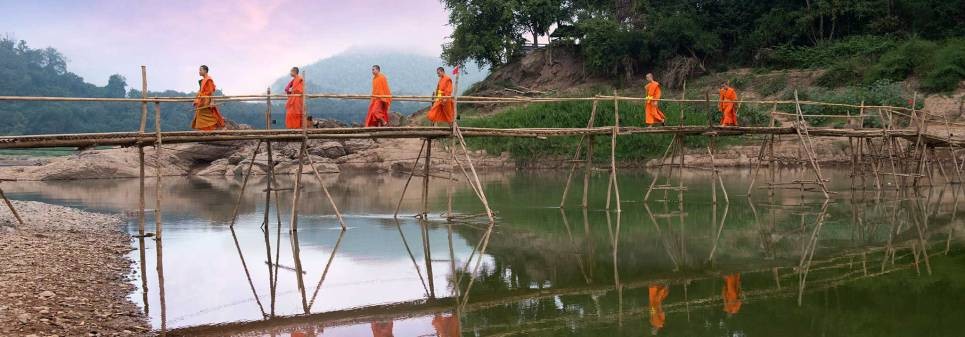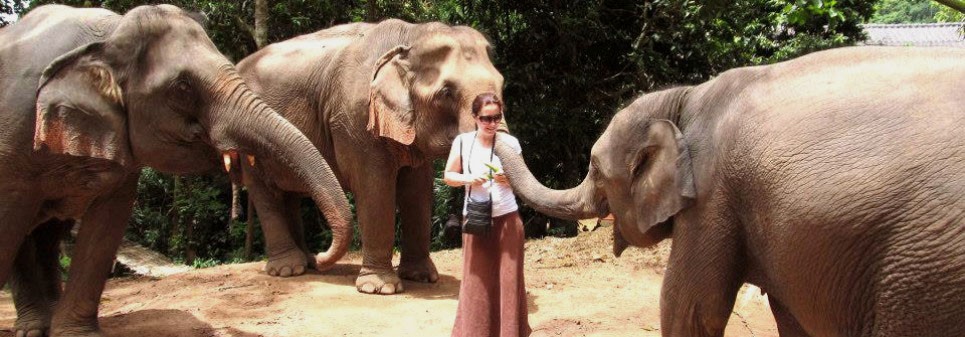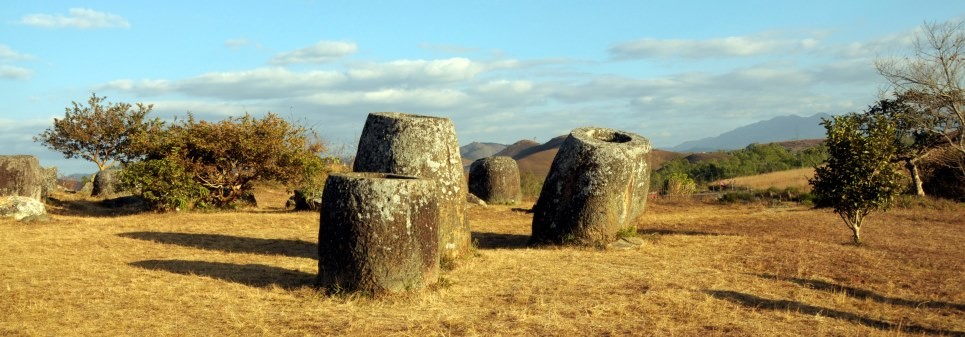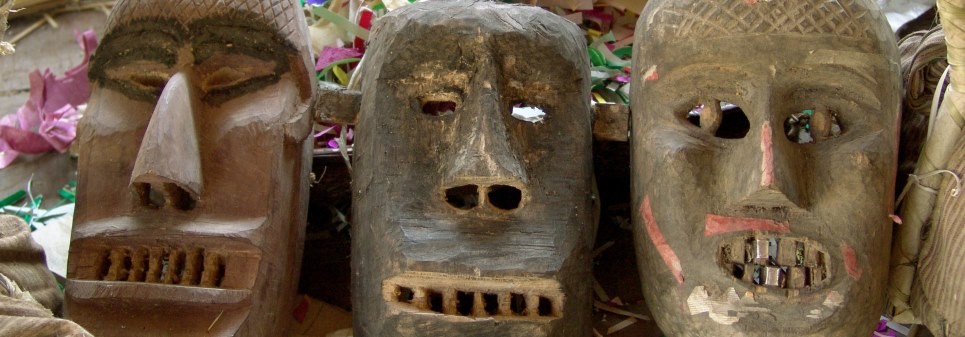Luang Prabang province, in northern Laos, offers many things to do but the traditional storytelling at Garavek Theatre is one of the more interesting options.
Luang Prabang is a famous tourist destination in Laos, attracting thousands of visitors every month. Some people go there to be immersed in the traditions of Lao culture and to hopefully learn a little bit about Lao history. The theater was opened with these tourists in mind.
The Garavek Theatre is a small venue under the direction of Mr Nicholas Gibson. It opened in 2014 after moving from Vientiane and is now located in Phonheuang village in the provincial capital. The stories are related in English and accompanied by the khaen, a traditional reed instrument. Tickets for a performance sell for 50,000 kip.

Photo: The Garavek
The people who work at the theatre have always been fascinated by folktales and legends, particularly stories that recount the origins of social groups and also the origins of natural features and other everyday things. Luang Prabang has a tonne of these stories. The stories are about the rivers and mountains; how they came to be there and where the names come from.
There are currently only six people employed at the theatre: two storytellers, Siphai and Thongsamay, a khaen player, and Keo-udon and Noy, who sell tickets and serve drinks. Then there is Nicholas, the director of the theatre, who also works the lights during the show.
There are eight stories the theatre currently performs, about the khaen, Fa Ngum, Xieng Mieng, the Mekong River, the Khan River, Ai Tongkuang, Phou Si hill, and Phou Thao-Phou Nang. They all are very entertaining and are worth knowing about.
The Khaen story describes how the instrument got its name. The story details a hunter and a widow who went hunting deer in the forest, stumbling across the beautiful sound of the Garavek bird, a magical bird. The widow was so enchanted with the sound that when she returned home she tried to make an instrument that could mimic the bird. She was finally successful using small pieces of bamboo, which made a beautiful sound. When the king heard about this instrument, he ordered her to his court and asked her to play it. Finally, he said to the woman, “Kenglai, theua ni khaen dae”, which means “Very Good, this time was better”. The word “khaen” means better, which is where the name of this instrument comes from. This word is local dialect in Luang Prabang.
Fa Ngum is the history of the famous Lao king who was born with 33 teeth. Thought to bring bad luck to the kingdom he deport the Khmer kingdom in Cambodia where he was cared for as a son of the Khmer king. At the age of 37, he triumphantly returned home to Luang Prabang to create the Kingdom of Lane Xang and bring Buddhism with him in the process.
Xieng Mieng involves two humorous stories: “Ma Konkai” or “Came before the Rooster” and “Tua Phaya Long Nong” or “Tricking the King into the Pond”.
The Mekong story involves two Nagas or snake deities that were fighting with each other over some porcupine meat. The fight was eventually stopped by the gods who told them to stop fighting and made them dig two rivers as punishment. One of these rivers was the Nan in Lane Na kingdom which runs through Bangkok and the other was the Mekong im Lane Xang kingdom.
Nam Khan talks about the Khan River. This story has two brothers fighting over a pair of elephant’s tusks that their father left for them. After one brother brutally cuts the other in half he could only crawl, crawling into the river giving it its name. “Nam” means river and “khan” means to crawl.
Ai Tongkuang is the story of a giant snake that lived where the Nam Khan meets the Mekong. As he was con sidered a very dangerous snake and stopped boats from passing, he was killed. According to tradition, the big rock in the water where the two rivers meet is his body.
Phou Si relates the story of Queen Sida asking the monkey king, Hanouman, to bring her some mushrooms. As the mushrooms were called “monkey ear” mushrooms the Queen was afraid to ask for them by name. After bringing back many mushrooms from the hills of Sri Lanka that were rejected by the queen, Hanouman finally brings back an actual hilltop in the hope that the queen could find her mushrooms there. The hill has stood in front of the palace ever since. If you didn’t know, “phou” is the Lao word for hill or mountain, while “Si” comes from Queen Sida.
Phou Thao-Phou Nang, or 12 sisters, tells the story of a poor family – a father and 12 daughters. The 12 sisters were abandoned by their father and found by a lady giant who raised them. After finding the giant’s heart inside a jar, they decided to leave, moving to King Phoutthasen’s palace where they were married to the king.
When the giant heard about this, she transformed herself into a beautiful lady, married the king, and banished the sisters to a cave, ordering their eyes to be removed. Fortunately one sister escaped and gave birth to a boy, also known as Phoutthasen. This boy grew up and married the giant’s adopted daughter, Kuanghi.
One morning, Phoutthasen discovered the giant’s heart and his aunt’s eyes. He collected them up and set off to return them to his family. His wife Kuanghi, feeling abandoned, killed herself by the Nam Khan river. When Phoutthasen returned he found Kuanghi and he too died from a broken heart. Thevada, a god sprite, saw this and decided to keep the couple there forever.
So when looking across the Mekong, the legend says you will see two mountains that look like people lying on their backs. The mountain in front of you is calle d Phou Nang or “girl mountain” and the smaller one on the left is called Phou Thao or “boy mountain”.
People seem to enjoy the Xieng Mieng stories because they’re funny, while the story of Mount Si is also funny and informative.
“Unfortunately, there are not many Lao people coming to the theatre but sometimes we’ve had students come as part of school trips, and tour guides as part of their job. The plays are in English and geared to tourists, so it isn’t surprising,” Nicholas said.
“I’ve researched a number of the stories in books, and complemented this by speaking to people around town. I also worked closely with the Department of Tourism, Information and Culture,” he added.
Nicholas also said he would like to offer shows that explore stories about different ethnic groups, such as the Hmong or Khmu.
For now the stories vary from day to day and month to month in the 30-seat theatre. They can be seen in a one hour performance running from 6:30pm-7:30pm.








